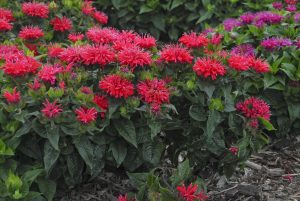In the Garden Blog
Cincinnati's Garden Blog "In the Garden"
Create a Pollinator Paradise: Cincinnati Gardeners’ Guide to Attracting Bees, Butterflies, and More!
Welcome to the buzzing world of pollinator gardens, where vibrant colors meet the delightful hum of bees, butterflies, and other essential pollinators! If you’re a Cincinnati gardener looking to add eco-friendly flair to your backyard, you’re in the right place. Cincinnati’s unique climate and fertile soil make it perfect for creating a thriving pollinator haven. Grab your gardening gloves, and let’s dive into the art of building a beautiful, buzzing garden!
Why a Pollinator Garden in Cincinnati?
Cincinnati’s blend of urban landscapes and green spaces provides an ideal setting for pollinator-friendly gardening. From the scenic Ohio River banks to the charming neighborhoods of Over-the-Rhine, opportunities abound for creating your pollinator oasis. With local initiatives like the Cincinnati Zoo’s Pollen Nation program and the city’s commitment to sustainable landscaping, you’ll be joining a community dedicated to protecting and nurturing local pollinators.
Best Plants for a Cincinnati Pollinator Garden
When creating a pollinator garden in Cincinnati, native plants are essential. These species are perfectly adapted to the local climate and provide vital food and habitat for native pollinators. Here are a few must-have plants for your Cincinnati pollinator paradise:
- Coneflowers (Echinacea purpurea): With vibrant purple petals and sturdy stems, these daisy-like blooms are a favorite among bees and butterflies. They’re as beautiful as they are beneficial, adding both color and texture to your garden. Learn more!
- Joe Pye Weed (Eutrochium purpureum): Despite the name, Joe Pye Weed is a pollinator powerhouse! Its fluffy pink blooms attract butterflies, bees, and even hummingbirds, making it a top pick for pollinator gardens. Learn more!
- Butterfly Milkweed (Asclepias tuberosa): This bright orange perennial is a magnet for monarch butterflies, offering essential food for caterpillars and nectar for adult butterflies. Learn more!
- Lavender (Lavandula spp.): Famed for its scent and color, lavender is a favorite of bees and other pollinators. Plant it in sunny, well-drained soil, and enjoy the fragrance as it brings life to your garden. Learn more!
- Bee Balm (Monarda spp.): With tubular flowers in vibrant reds and pinks, bee balm lives up to its name, attracting bees of all kinds. This versatile plant also provides food for hummingbirds and butterflies. Learn more!
Looking for the perfect pollinator plants? Check out Natorp’s Pollinator Friendly Plant Collection!
Designing Your Pollinator Paradise
Now that you’ve picked your plants, it’s time to create your garden layout. Aim for various colors, shapes, and heights to attract a diverse range of pollinators. Cluster plants together in “pollinator hotspots” to make it easier for bees and butterflies to locate nectar sources. For added texture and structure, incorporate native grasses and shrubs, which provide shelter and additional food for pollinators.
Simple Tips for Easy Pollinator Garden Maintenance
Once your pollinator garden is thriving, upkeep is simple:
- Monitor for Pests and Diseases: Regularly check for pests and remove any diseased foliage.
- Deadhead Blooms: Encourage continuous blooming by removing spent flowers.
- Water Wisely: Keep your plants hydrated during dry spells to support pollinator activity.
With some planning, creativity, and the right plants, you can create a Cincinnati pollinator garden that attracts bees, butterflies, and other beneficial insects. Ready to turn your backyard into a buzzing pollinator paradise? Happy gardening!
Have a question? Ask our experts!